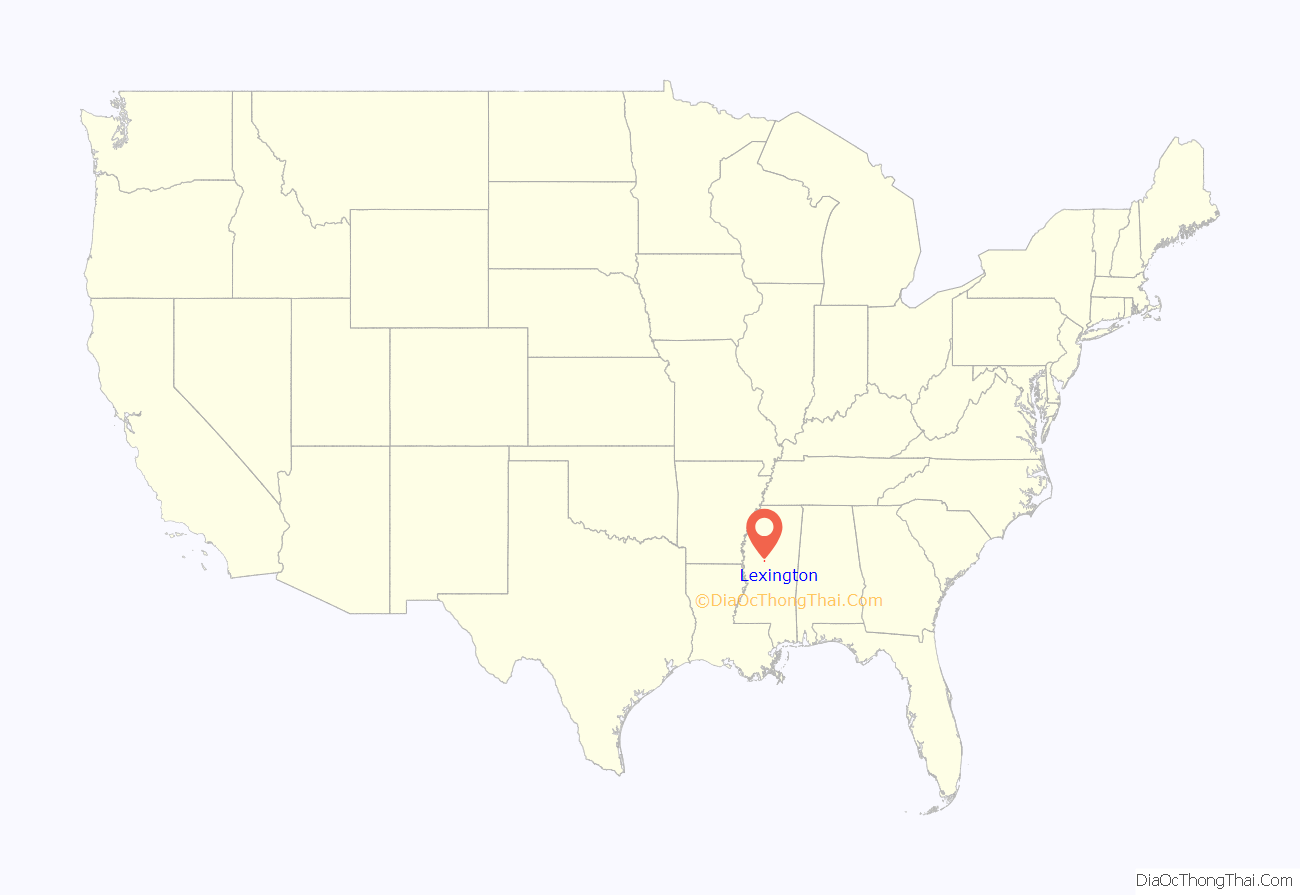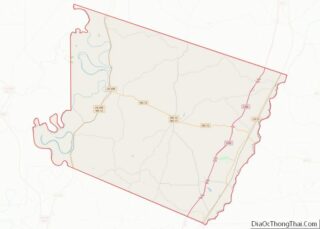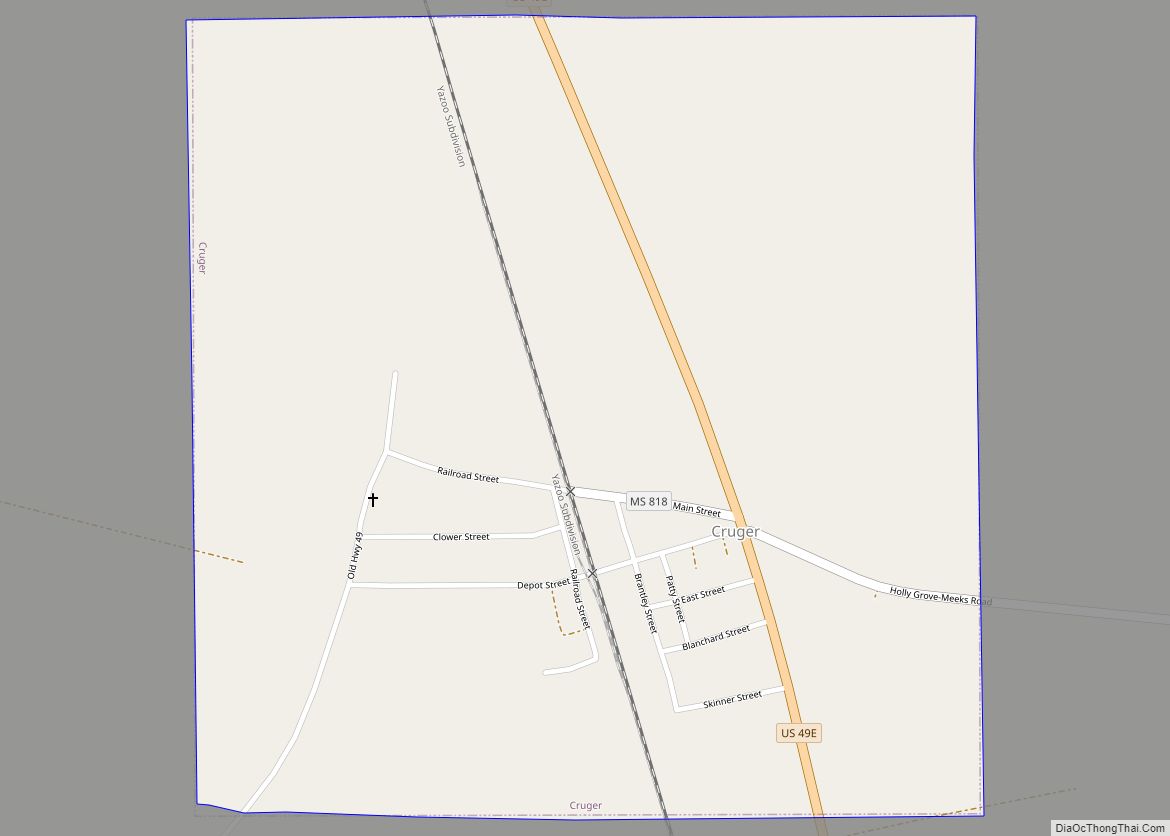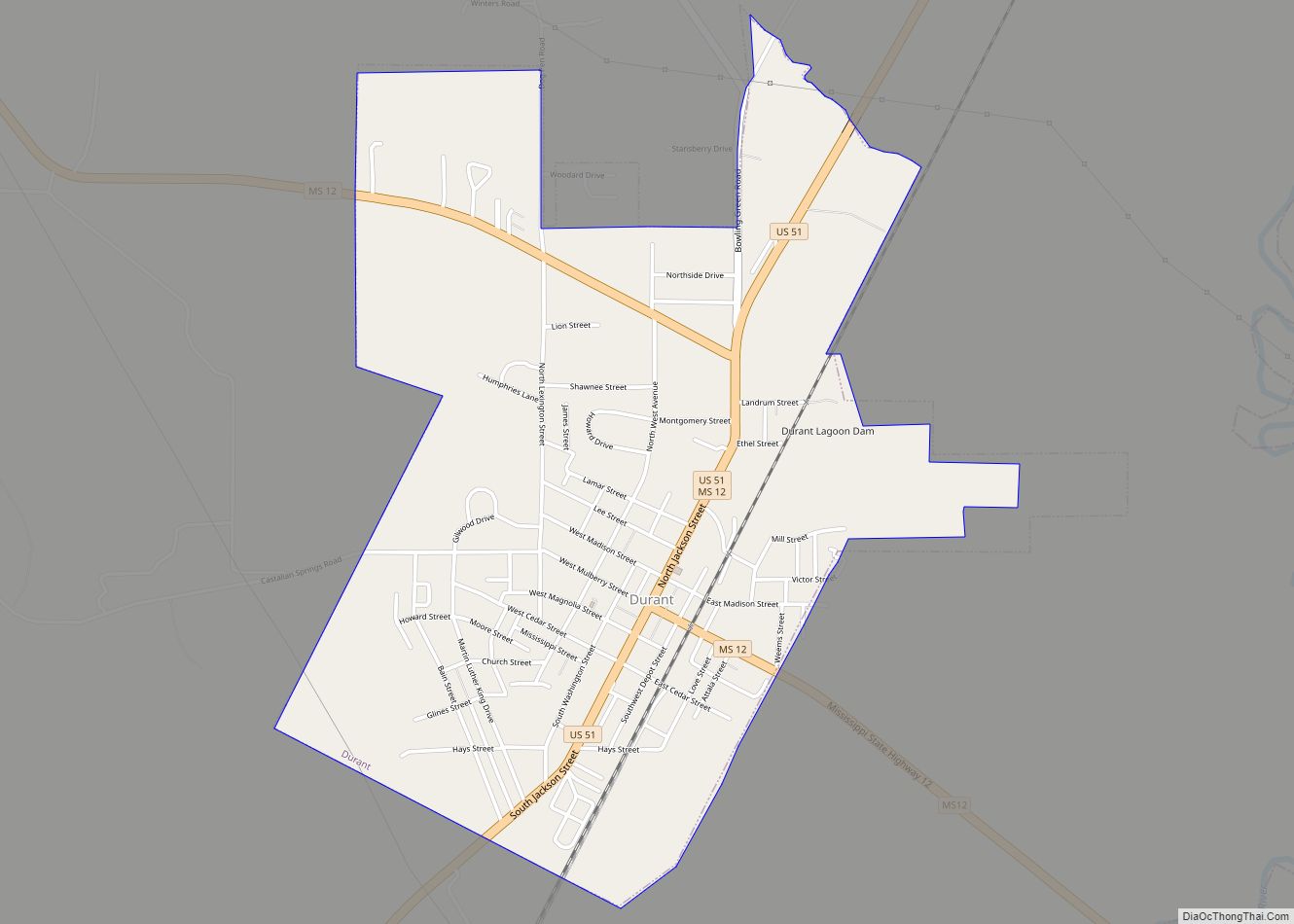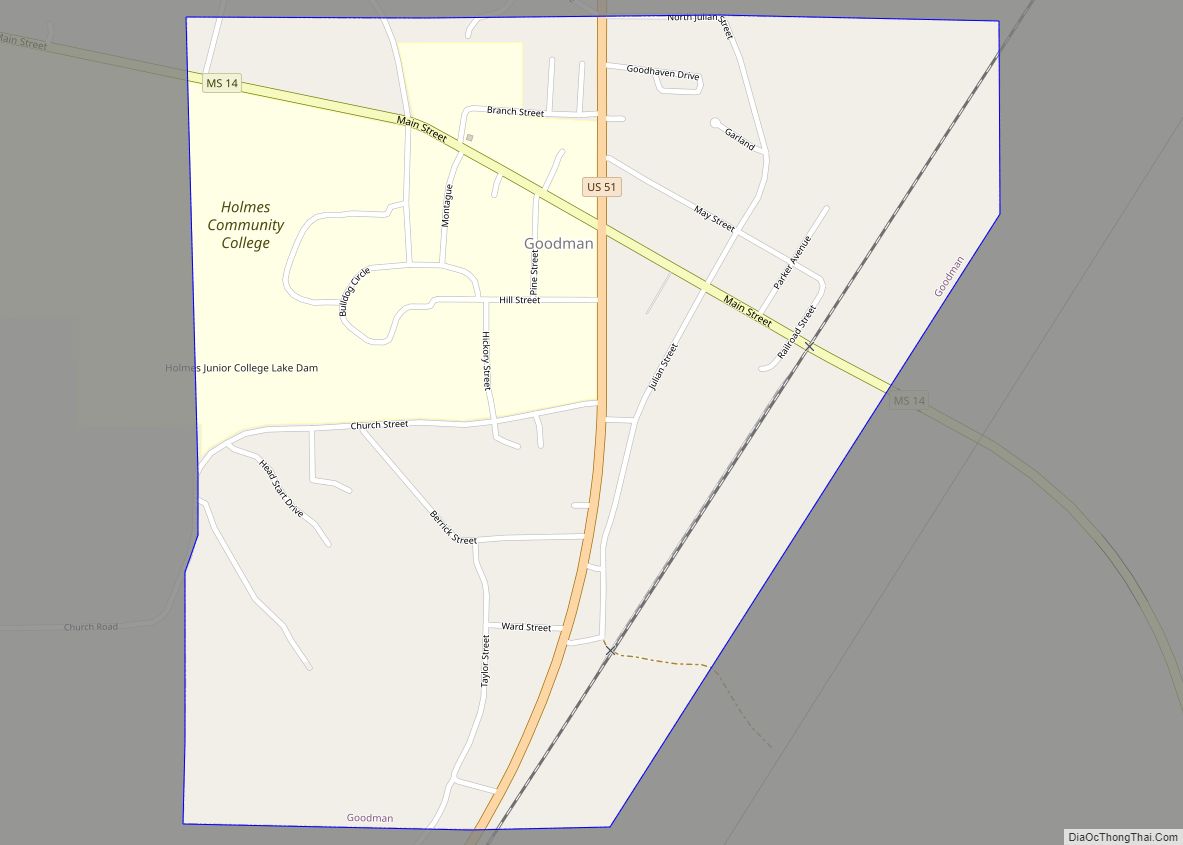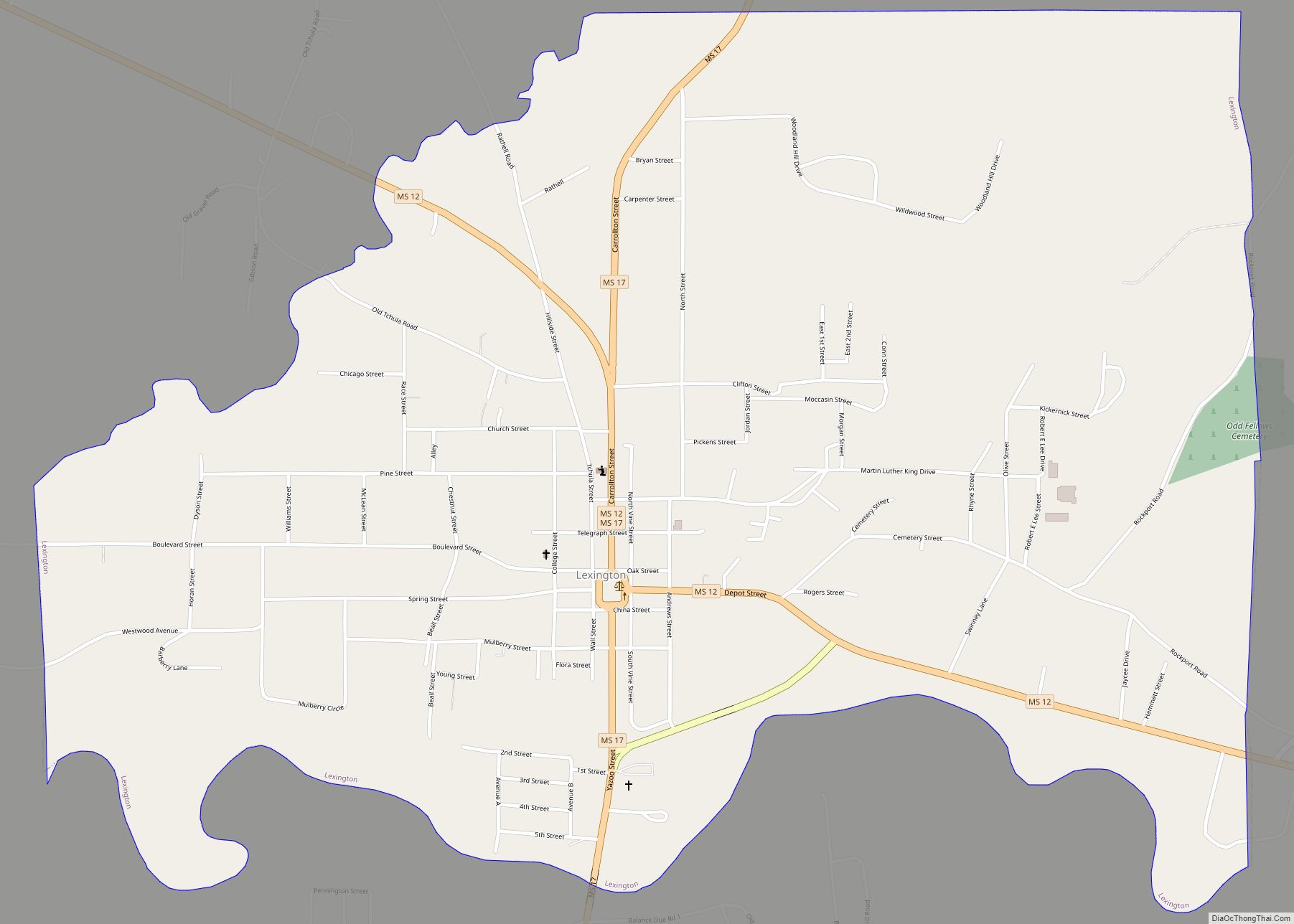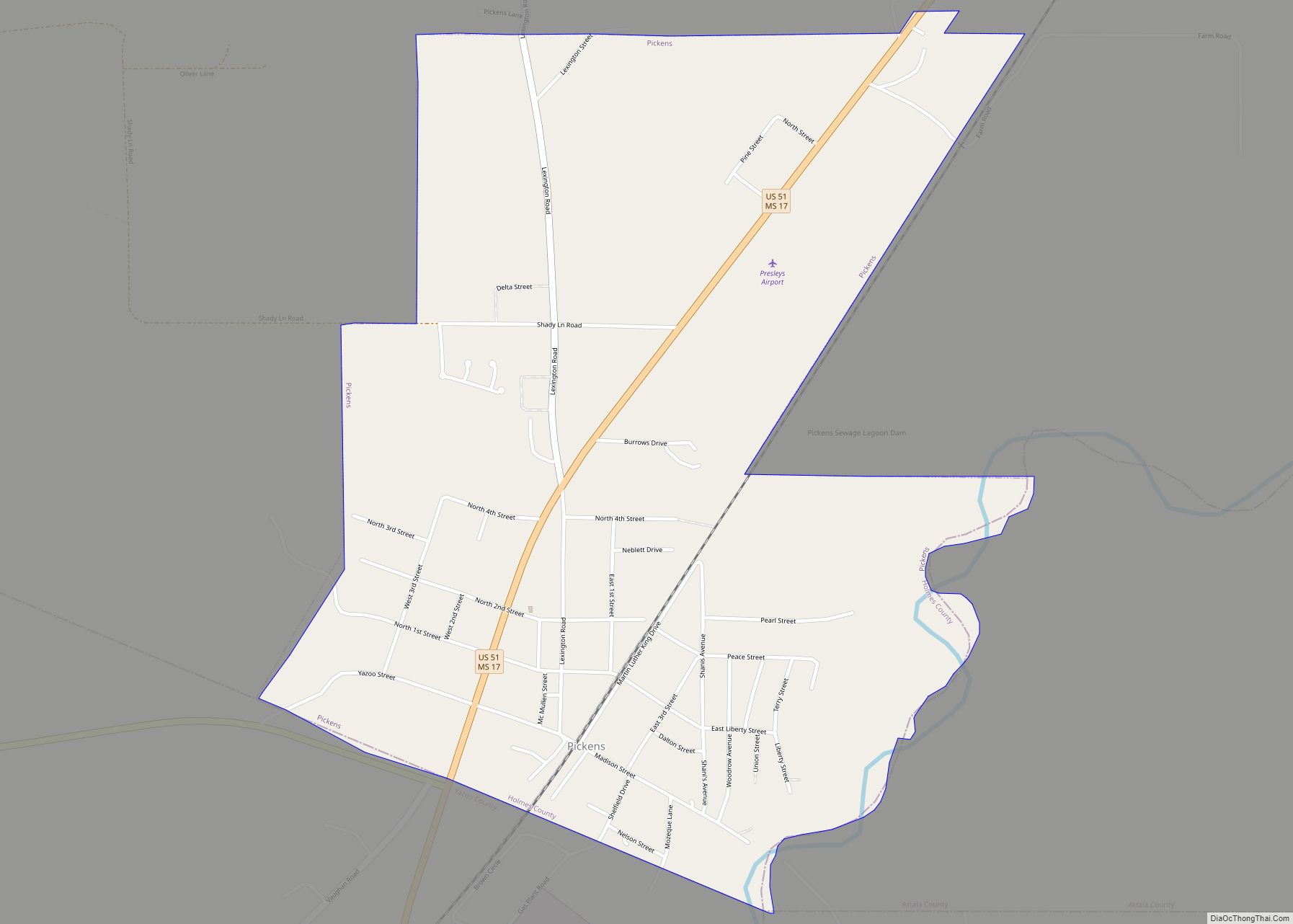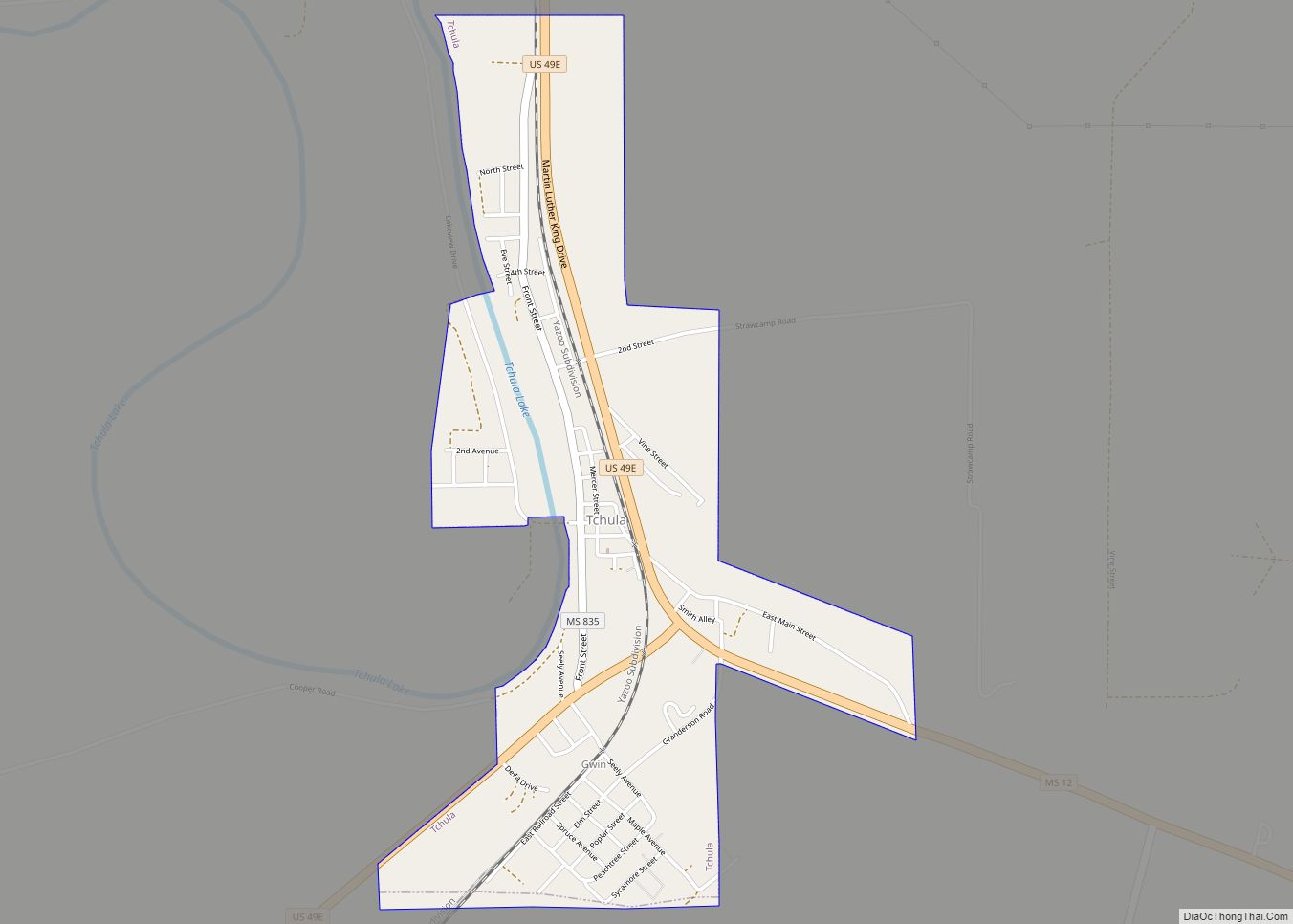Lexington is a city in and the county seat of Holmes County, Mississippi, United States. The county was organized in 1833 and the city in 1836. The population was 1,731 at the 2010 census, down from 2,025 at the 2000 census. The estimated population in 2018 was 1,496. It has declined from its high of 3,198 in 1950 due to the expansion of industrial-scale agriculture.
| Name: | Lexington city |
|---|---|
| LSAD Code: | 25 |
| LSAD Description: | city (suffix) |
| State: | Mississippi |
| County: | Holmes County |
| Elevation: | 233 ft (71 m) |
| Total Area: | 2.42 sq mi (6.27 km²) |
| Land Area: | 2.42 sq mi (6.26 km²) |
| Water Area: | 0.00 sq mi (0.01 km²) |
| Total Population: | 1,602 |
| Population Density: | 662.81/sq mi (255.86/km²) |
| ZIP code: | 39095 |
| Area code: | 662 |
| FIPS code: | 2840600 |
| GNISfeature ID: | 0672434 |
Online Interactive Map
Click on ![]() to view map in "full screen" mode.
to view map in "full screen" mode.
Lexington location map. Where is Lexington city?
History
Incorporated in 1836, the city was founded by European-American settlers after most of the Choctaw people, who had long occupied this area, were forced to cede their land to the United States and remove to the Indian Territory. The new settlers initially developed riverfront land along the Yazoo and Black rivers for cotton plantations, primarily worked by enslaved African Americans. The enslaved people were brought by planters with them from the Upper South or transported in the domestic slave trade. In total, more than one million African Americans were transported to the Deep South, breaking up many families. The African-descended enslaved people soon constituted the majority of the Holmes County population.
On court days, the town served as a trading center for the county and attracted retail merchants. Lexington was a destination in the 1830s of some German-Jewish immigrants, who often became merchants. They were joined much later in the century by Russian Jewish immigrants. The Jewish community built Temple Beth El in Lexington in 1905; it closed in 2009 because of declining population. During the plantation era, the city was bustling, as planters grew wealthy from the booming demand for cotton in the North and Europe.
Among the early settlers in the 1830s was German-Jewish immigrant Jacob Sontheimer, who first worked caring for an elderly planter. After being bequeathed land, Sontheimer later became a merchant in town. His two daughters, Rose and Bettie, also became merchants, managing the Sontheimer business. He was joined by other Jewish immigrants from Germany, totaling about 20 by the late 1870s and 50 by 1900. In the later years Jewish immigrants also came from eastern Europe to Lexington. They developed tailoring and grocery businesses; the Lewis Grocery Store developed into a major wholesaler in the state.
After the Civil War, freedmen in Holmes County, who constituted the majority of the population, joined the Republican Party and elected several county sheriffs and other local officers. They sought education and some became landowners, clearing land in the bottomlands and selling their timber to raise money for purchase. This progress was before 1890, when they were essentially deprived of the vote by the state legislature passing a new constitution, which created barriers to voter registration and forced them out of politics for decades into the late 20th century. In the late 19th and early 20th centuries, financial recession and lack of political clout meant that many freedmen lost their land; within a generation they had regressed to the status of sharecropper and tenant farmer.
20th century to present
Edmund F. Noel, an attorney in Lexington, was a son of planters Leland and Margaret Noel, from Virginia and North Carolina, respectively. His father had developed cotton plantations in Holmes County in the antebellum period. The younger Noel became a politician, elected as a state legislator and later as district attorney. In 1906 he was elected as governor of Mississippi, serving through 1912. His house at North Street is listed on the National Register of Historic Places for its distinctive architecture, and is known as the “Gov. Edmond F. Noel House.” It was bequeathed to him by his mother.
In the early 20th century, Mississippi planters recruited Chinese immigrant workers to satisfy the demand for farm labor, and some came to Holmes County. As the area suffered from the boll weevil infestation, the cotton crops suffered. Agricultural mechanization reduced the need for farm labor, leading to a decline in county and town populations from the 1930s on. Many African Americans fled the South for northern and midwestern industrial cities, seeking more opportunities and escape from the violence of lynchings and oppression of Jim Crow rules.
In the 1940s, two lynchings of black men took place in or near Lexington: singer B.B. King later recounted having seen a youth hanged in the courthouse square during the short time he was living there as a teenager, about 1942–1944. The body of 35-year-old Leon McTatie was found on 24 July 1946 in a bayou in nearby Sunflower County. He was beaten to death for allegedly stealing a saddle. Six white men were charged in his lynching but quickly acquitted at trial.
Lexington was distinguished by two nationally known women: Arenia Mallory, an African-American music teacher from Illinois, started teaching at the newly established Saints Academy in Lexington in 1926, which was affiliated with the Church of God in Christ. She led the school for more than 50 years, expanding its programs to grades 1–12, and establishing a junior college. She developed the school from the early 20th century as a model of academic excellence for African-American students. During her long tenure, she also founded an associated junior college. During the 1960s, she was appointed by President John F. Kennedy to national positions and committees in the federal government.
Hazel Brannon Smith, a white woman from an upper-class family, was based in Lexington, where she owned and published several rural newspapers. She promoted integration and change in the region during the civil rights era, winning a Pulitzer Prize for her editorials in 1964, the year of Freedom Summer and the Mississippi Freedom Democratic Party, organized by African Americans before the Voting Rights Act of 1965 was passed by Congress.
Lexington Road Map
Lexington city Satellite Map
Geography
Lexington is in the center of Holmes County on the north side of the valley of Black Creek, a west-flowing tributary of the Yazoo River. Mississippi Highways 12 and 17 pass through the city, sharing four blocks of Carrollton Street north of the city center. Highway 12 leads east 13 miles (21 km) to Durant and northwest 11 miles (18 km) to Tchula, while Highway 17 leads north 30 miles (48 km) to Carrollton and south 18 miles (29 km) to Pickens.
According to the United States Census Bureau, the city has a total area of 2.4 square miles (6.3 km), of which 9,785 square metres (2.4 acres), or 0.16%, are water.
Climate
The climate in this area is characterized by hot, humid summers and generally mild to cool winters. According to the Köppen Climate Classification system, Lexington has a humid subtropical climate, in common with the vast majority of the American South.
See also
Map of Mississippi State and its subdivision:- Adams
- Alcorn
- Amite
- Attala
- Benton
- Bolivar
- Calhoun
- Carroll
- Chickasaw
- Choctaw
- Claiborne
- Clarke
- Clay
- Coahoma
- Copiah
- Covington
- Desoto
- Forrest
- Franklin
- George
- Greene
- Grenada
- Hancock
- Harrison
- Hinds
- Holmes
- Humphreys
- Issaquena
- Itawamba
- Jackson
- Jasper
- Jefferson
- Jefferson Davis
- Jones
- Kemper
- Lafayette
- Lamar
- Lauderdale
- Lawrence
- Leake
- Lee
- Leflore
- Lincoln
- Lowndes
- Madison
- Marion
- Marshall
- Monroe
- Montgomery
- Neshoba
- Newton
- Noxubee
- Oktibbeha
- Panola
- Pearl River
- Perry
- Pike
- Pontotoc
- Prentiss
- Quitman
- Rankin
- Scott
- Sharkey
- Simpson
- Smith
- Stone
- Sunflower
- Tallahatchie
- Tate
- Tippah
- Tishomingo
- Tunica
- Union
- Walthall
- Warren
- Washington
- Wayne
- Webster
- Wilkinson
- Winston
- Yalobusha
- Yazoo
- Alabama
- Alaska
- Arizona
- Arkansas
- California
- Colorado
- Connecticut
- Delaware
- District of Columbia
- Florida
- Georgia
- Hawaii
- Idaho
- Illinois
- Indiana
- Iowa
- Kansas
- Kentucky
- Louisiana
- Maine
- Maryland
- Massachusetts
- Michigan
- Minnesota
- Mississippi
- Missouri
- Montana
- Nebraska
- Nevada
- New Hampshire
- New Jersey
- New Mexico
- New York
- North Carolina
- North Dakota
- Ohio
- Oklahoma
- Oregon
- Pennsylvania
- Rhode Island
- South Carolina
- South Dakota
- Tennessee
- Texas
- Utah
- Vermont
- Virginia
- Washington
- West Virginia
- Wisconsin
- Wyoming
